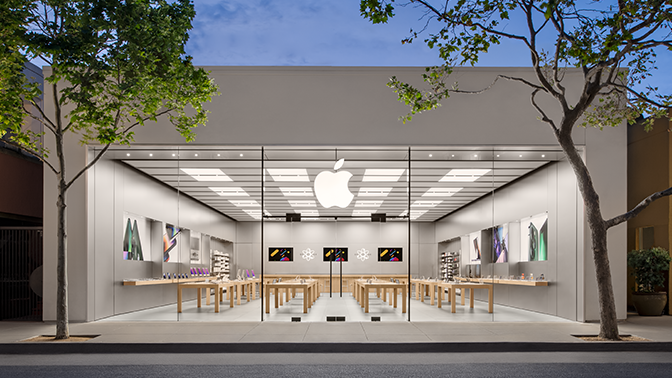Home » Capabilities » Branding » Positioning
brand positioning
Positioning is the art and science of defining a space wholly differentiated from the competition. While capital-B Branding helps companies stand out in the noisy marketplace, positioning ensures your company is ready to outshine the competition.
Uncovering, clarifying, and creating a unique brand positioning strategy, framework, and statement demands buy-in from senior executives across your organization, including people from sales, marketing, customer service, and product teams.
As a brand positioning agency, our process is a blend of science and art that crafts strategies unique to your business. Whether you’re a startup carving out your niche or an established enterprise redefining your market, our services are the rocket fuel for your success. From competition analysis to identifying your unique attributes and ideal customers, we ensure every aspect of your positioning is meticulously developed and actionable.
our approach to positioning
At Farinella, we believe that brand positioning agency services start with an immersive approach and work hand-in-hand to deliver positioning that moves the needle.
Here’s how we do it:
Identify the team
- Pick executives from sales, product, customer service/success, marketing, and accounting to give a well-rounded perspective on the business.
Define the competition
- As a leading brand positioning agency, we analyze direct and indirect competitors to understand the market landscape.
List your unique attributes
- Find what differentiates your product or company from the competition. Our experience shows the laddering method is one of the most effective and efficient ways to uncover what is unique about your company.
Find your differentiated value
- List your product or company’s capabilities/features and ask: “What does that feature enable?” Then ask: “What does it matter?” Keep drilling down on the second question to find your true differentiated value.
Look for your ideal customers
- Demographics and firmographics are good starting points but avoid generic definitions of your ideal customers and look for those who care about your differentiated values enough to buy.
Clarify your marketplace
- While most companies nail this in the early days, confirming it and investigating adjacent opportunities is a good idea.
Codify the findings
- Draft a document or presentation to act as a roadmap for the company.
Test the hypothesis
- One of the best ways to validate the positioning is to have a salesperson test it on a new potential client (an existing client has already heard the pitch and might be tainted).
Refine and roll
- Refine the positioning statement based on feedback from your sales team and other stakeholders and distribute it to your marketing and communications teams.
questions?
Whew. That’s already a lot of information. We’re happy to jump on a call or use the Zoom machine to talk through solutions to your challenges.
our brand positioning capabilities
We specialize in creating actionable and unique Brand Positioning statements that set you apart. Our expertise lies in our thorough, research-driven process and our ability to integrate insights from various parts of your company. This holistic approach ensures your positioning is distinctive and resonates deeply with your target audience.
Competitive Analysis
- Step one is always to examine your industry and direct and indirect competitors to help us understand where you stand and how we can help you stand out.
Unique Attribute Identification
- Our team uses techniques like brand laddering to identify what makes your brand unique. We focus on uncovering the attributes that resonate most with your ideal customers.
Differentiated Value Discovery
- We look beyond the features and benefits of your product or service to understand how it matches your customers’ needs. With that information in hand, we set a brand positioning framework that informs your company’s marketing and communications strategies.
Ideal Customer Profiling
- We go beyond traditional demographics and firmographics to understand your ideal customers’ motivations and values, which helps us craft a positioning statement that speaks directly to the people most likely to become loyal advocates for your brand.
Sectors and Markets
- Identifying a business’s ideal marketplace happens early in a company’s lifespan, but looking at additional opportunities can be beneficial to long-term growth. So, we confirm that you’re selling in the right marketplace while investigating ancillary spaces where you can sell your product or service.
Can you give me a real-world business example?

Pick just about any company leading its category, and you’ll find clear, actionable, and ownable positioning. Coca-Cola, Nike, and Tesla are lions, and so is Apple. Let’s look at Apple in relation to the five-part considerations of competition, differentiation, value, ideal customers, and the marketplace.
Competition
In its earliest days, Apple was a computer hardware company that aimed to build innovative, premium, and design-forward machines. So, its competition then was hardware manufacturers like IBM, Hewlett-Packard, and the like. Over the years, Apple evolved into a digital lifestyle brand with the iPod, iPhone, iPad, and iWatch, along with a well-rounded suite of software applications from iTunes to iWork (RIP).
Apple is an interesting study because its competition is essentially the world. But, rather than boiling the ocean, the company finds positioning success across its many divisions with its overarching “Think Different” messaging.
Differentiation
There are utilitarian brands, and then there is Apple, which boasts premium, innovative, well-designed, and ultimate user experience as its main differentiators. While certain divisions lag (Let’s count the three people who use Pages for word processing), hardware and lifestyle applications, including Apple TV+, are upscale products that stand out in the crowd.
Value
The seamless integration within the Apple ecosystem is one of the things that drives the perception of value, but Apple takes all of its capabilities to a goal that customers are trying to achieve. From there, it discerns its differentiated value to help build its positioning statement.
Ideal Customers
Like many premium brands, Apple’s ideal customer is the person who values (and will pay for) its capabilities. While demographics are a good start to determining an ideal customer, there’s more benefit to identifying the people who care about the values the product offers. That means it’s not just the 1%ers of the world who can afford luxury; it’s all of the people who will pay for Apple’s features.
Marketplace
While Apple’s competition is varied, its marketplace is relatively obvious—a company that offers the tools to lead a digital-first lifestyle. From hardware to software to applications, Apple finds a segment of an existing market category (digital watches that help the fitness-minded, for instance) and begins to win market share and then dominate.
By working through this process, Apple has uncovered, defined, and mastered its position, achieving an astonishing level of brand loyalty and profitability.
Brand Positioning FAQs
What is Brand Positioning?
Brand Positioning defines a space in the market that differentiates your brand from the competition. It involves understanding your unique attributes, value, ideal customers, and marketplace.
Why does a business need positioning?
The goal of any business — we assume — is to make money. The path to profitability begins with a positioning statement that enables every company to carve its niche, define its ideal customer, and confirm that it is in the proper market.
While essential for marketing teams as the foundation for advertising campaigns, digital marketing, and communications efforts, positioning is the rocket fuel behind every sales pitch. A company’s positioning statement is the thing that every salesperson will use when they stand in front of potential customers to convince them to buy their company’s solution.
So, why does a business need positioning? Because it is the runway for every business’s success.
How long does the positioning process take?
A handful of factors go into answering this question, including the complexity of your industry and the availability of your team. Typically, our comprehensive process takes 6 to 8 weeks.
But Wait, There's More
our thoughts on brand positioning
let’s talk
Let us know if we can help answer any questions about positioning or other branding capabilities.
